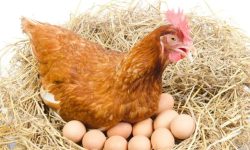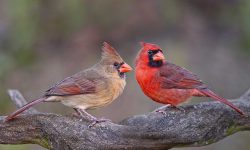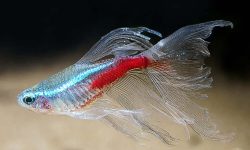Penguins are among the most iconic and fascinating birds on Earth, especially known for their remarkable ability to endure the brutal cold of the Antarctic. From freezing temperatures and relentless winds to icy waters, penguins face a daily battle for survival. This article explores in detail the various physical, behavioral, and environmental adaptations that allow penguins to thrive in such extreme cold climates.

Anatomy Built for the Cold
Thick Layer of Blubber
Penguins have a thick layer of fat, called blubber, located just beneath their skin. This blubber serves as a highly effective thermal insulator, helping penguins retain the body heat they generate. It acts like a natural blanket, slowing down the transfer of heat from their warm body to the much colder surrounding air or water.
Blubber is not just for warmth—it also functions as a vital energy reserve. During long fasting periods, such as when penguins are incubating eggs or going through their annual molting phase, they cannot hunt. In these times, the energy stored in their blubber helps maintain metabolic activity and body temperature, ensuring survival in extreme environments where food can be scarce for weeks.
Additionally, the thickness of the blubber layer can vary depending on the penguin’s species, diet, and season, offering flexible protection that adapts to environmental challenges.
Dense and Waterproof Feathers
Unlike most birds, penguins have uniquely adapted feathers that serve two crucial purposes: thermal insulation and waterproofing.
Penguin feathers are densely packed—there are over 100 feathers per square inch—creating a tight outer layer that traps a cushion of warm air close to the skin. These feathers are short, stiff, and overlap in a way that prevents cold air and water from penetrating the body surface.
To stay dry while swimming in icy oceans, penguins use oil from the uropygial gland, located near the base of the tail. They spread this oil over their feathers during preening, creating a waterproof coating that repels moisture and keeps the insulating air layer intact even under water.
Beneath the outer feathers lies a soft, downy layer that adds an extra level of insulation. This inner layer traps additional air, functioning like the inner lining of a thermal jacket, and keeps body heat from escaping into the surrounding cold environment.
Compact Body Shape
Penguins have a short, rounded, and streamlined body that plays a major role in minimizing heat loss. This body design reduces the surface area-to-volume ratio, which is a fundamental principle in biology: the less surface area exposed to cold air, the less heat a body loses.
Their short legs and small flipper-like wings help limit exposure of extremities, which are usually the first parts of the body to lose heat. By keeping limbs close to the core and covered with dense feathers, penguins can retain warmth more effectively.
Additionally, their smooth, torpedo-shaped bodies allow them to swim efficiently while conserving energy. The compact shape not only helps in locomotion but also reduces the impact of wind chill when standing on ice for long periods. Penguins often huddle together, further reducing heat loss through shared body warmth—another behavior made more effective by their compact anatomy.
Behavioral Strategies for Warmth
Huddling Together
One of the most remarkable behavioral adaptations penguins use to survive extreme cold is huddling, particularly among Emperor Penguins, which endure the harshest winters on Earth. In groups that can number in the thousands, penguins form tightly packed circles to share body heat. Each penguin in the group presses its body against its neighbors, reducing the amount of surface area exposed to freezing air.
This coordinated movement isn’t random. Penguins rotate positions, gradually moving from the cold outer edge to the warm inner core of the huddle. Over time, those in the center shift to the outside, allowing others to warm up. This dynamic circulation ensures that all individuals receive periods of relative warmth, preventing frostbite or hypothermia, especially during long blizzards or polar nights.
This strategy is not just a passive grouping—it requires instinctive coordination and social cooperation, which is rare and sophisticated in the animal kingdom.
Tucking in Extremities
To prevent unnecessary heat loss, penguins instinctively tuck in their extremities, including their beaks, flippers, and feet, close to the warmth of their bodies. These parts of the body have a high surface-area-to-volume ratio and are therefore more vulnerable to losing heat.
By holding their flippers tightly against their sides and resting on the heels of their feet, they limit contact with the icy ground. Many penguins also rest their heads on their chests, which helps shield their beaks from biting wind.
This posture not only protects vital areas from the cold but also reduces blood flow to exposed limbs, a process known as vasoconstriction, helping conserve core temperature. At the same time, a counter-current heat exchange system in their legs ensures that warm blood from the body warms up the cooler blood returning from the feet, minimizing heat loss.
Reduced Activity During Harsh Conditions
During the coldest weather or snowstorms, penguins often reduce their physical activity to conserve energy. Instead of foraging or moving around, they remain in one place—usually within a protective huddle—relying on their fat reserves and insulating feathers for warmth.
By minimizing motion, penguins limit energy expenditure and avoid excessive calorie burn, which is crucial in an environment where food may not be immediately available. This behavior reflects a biological strategy known as torpor-like energy conservation, allowing penguins to survive for extended periods in extreme cold without needing to replenish energy frequently.
In sum, penguins combine biological design with behavioral intelligence, showing that warmth in the Antarctic isn’t just about anatomy—it’s also about smart, collective survival.
Adaptations in Reproduction
Winter Breeding Cycle
Emperor Penguins exhibit one of the most extraordinary reproductive strategies in the animal kingdom: they begin breeding in the middle of the Antarctic winter, when temperatures can plunge below –60°C (–76°F) and winds can reach hurricane force. While this may seem counterintuitive, it is actually a well-timed adaptation. By laying eggs in winter, chicks hatch in early spring—a time when daylight increases, temperatures slightly improve, and food (like krill and fish) becomes more abundant.
During this time, males take on the sole responsibility of incubating the eggs, standing in place for more than two months without eating. They rely entirely on the energy stored in their blubber to survive, often losing over 20 kilograms in the process. This winter breeding ensures the next generation is ready to grow during the Antarctic’s most productive season.
Egg Incubation on Feet
Instead of placing their eggs directly on the ice—where they would freeze instantly—male Emperor Penguins carefully balance the eggs on top of their feet, elevating them above the frozen ground. They then cover the egg with a special fold of abdominal skin called the brood pouch. This structure traps the parent’s body heat and creates a stable, warm microclimate for the egg.
The skin of the brood pouch is rich in blood vessels, allowing heat to transfer efficiently from the male’s body to the egg. Even in temperatures colder than a household freezer, the temperature inside the brood pouch remains steady at around 35°C (95°F)—essential for embryonic development.
This method of incubation is both precise and fragile. If the egg is exposed to the cold for more than a few minutes, the embryo could die. Males must stand still, endure starvation, and protect the egg with incredible patience and precision.
Chick Rearing with Group Support
After the eggs hatch, newborn chicks are highly vulnerable to cold and predation. For the first few weeks, they remain tucked under their parent’s brood pouch, much like during incubation. As they grow and become more mobile, the chicks begin to gather in groups known as crèches—communal nurseries that provide both warmth and protection.
In these crèches, chicks huddle together while both parents alternate foraging trips at sea. This collective behavior allows the young penguins to retain body heat and develop social bonds, all while minimizing the risk of hypothermia and predation.
Meanwhile, returning parents use vocal recognition to locate their chicks in the noisy crowd—each penguin chick has a unique call that their parents can identify. This ensures that each chick gets the food it needs, even among thousands.
This entire reproductive cycle is a testament to extreme adaptation: it synchronizes biology, behavior, and environmental timing to give chicks the best possible chance of survival in one of the most hostile climates on Earth.
Thermal Regulation and Circulation
Counter-Current Heat Exchange
Penguins use a biological system known as counter-current heat exchange to minimize heat loss in their extremities, particularly the legs and flippers, which are in constant contact with ice or cold water.
Here’s how it works: warm, oxygen-rich blood flowing from the heart travels down arteries into the legs and flippers. As it does, it passes very close to veins carrying cold blood back up from the extremities. The proximity allows heat from the outgoing blood to transfer into the incoming, colder blood—warming it up before it reaches the body core. At the same time, the blood moving toward the feet is cooled down before reaching the surface, which prevents excessive heat from being lost to the surrounding environment.
This highly efficient thermal recycling system helps penguins conserve energy and maintain a stable internal temperature, even when standing barefoot on ice for hours or swimming in near-freezing seawater.
Ability to Control Blood Flow
Penguins also have the ability to actively regulate blood flow to different parts of their bodies based on external temperatures. In extremely cold conditions, blood flow to the feet, flippers, and beak is reduced through vasoconstriction—the narrowing of blood vessels. This helps to preserve heat in the body’s core, where critical organs like the heart, lungs, and liver are located.
Though this means the extremities become colder, penguins are adapted to tolerate it. Their tissues can endure low temperatures without becoming damaged, a trait supported by specialized proteins and antifreeze-like mechanisms at the cellular level.
When temperatures rise or when a penguin begins to move more actively (e.g., during swimming), blood flow is restored, allowing excess heat to be released and preventing overheating—a necessary balance in such a dynamic environment.
Breathing and Heat Conservation
Even penguin respiration is adapted to preserve body warmth. When penguins inhale, the cold outside air travels through narrow nasal passages lined with warm, moist tissue. This structure gently warms and humidifies the air before it reaches the lungs, reducing the thermal shock of breathing frigid air.
When exhaling, the process reverses. The warm outgoing air passes over the same cooled nasal passages, allowing heat and moisture to be reabsorbed by the tissues instead of being lost to the environment. This unique respiratory adaptation helps penguins retain both body heat and precious internal water, which is especially critical in cold, dry Antarctic air where dehydration can be a concern.
Together, these physiological mechanisms give penguins an extraordinary ability to survive and function in some of the harshest conditions on Earth, balancing warmth, energy efficiency, and survival with precision.
Environmental and Social Support Systems
Colonial Living
Penguins are highly social animals, and most species nest and breed in large, dense groups called colonies. These colonies can consist of thousands to hundreds of thousands of individuals, all gathered in relatively small areas. This mass grouping offers significant thermal advantages in the harsh polar climate.
By clustering together, penguins can shield one another from wind and reduce heat loss, especially during storms. Even species that don’t huddle as tightly as Emperor Penguins still benefit from the microclimate created within a colony, where temperatures can be several degrees warmer than in the open environment. Additionally, these social structures help protect against predators, as there’s strength in numbers—more eyes watching means early warnings and safety for chicks and eggs.
Colonies are often located in areas with natural geographic features like snowbanks, cliffs, or rocky outcroppings that provide windbreaks and shelter. These landscape features further enhance the group’s ability to maintain warmth and survive in challenging conditions.
Nesting Choices
Penguins are selective and strategic nest builders, often choosing sites that offer both warmth and protection. Species like the Adélie and Gentoo Penguins build nests out of pebbles, which serve several important functions: they elevate the eggs off the cold, wet ground to improve insulation, allow drainage during snowmelt or rain, and help prevent the eggs from freezing or getting waterlogged.
Some penguins, such as the Chinstrap and Rockhopper, nest in rocky crevices or cliffside ledges where natural features offer shelter from wind and predators. By selecting such nesting sites, penguins increase the likelihood of egg survival and reduce heat loss during incubation.
The choice of location and nest construction is not random; it’s the result of evolved behavior aimed at maximizing reproductive success in cold environments. Even a few degrees of warmth from a well-placed pebble nest can make the difference between survival and failure.
Sharing Parenting Duties
Parental cooperation is another key adaptation that helps penguins thrive in extreme conditions. In many species, especially Emperor and King Penguins, both male and female parents actively share the responsibilities of raising their young.
During the Antarctic winter, male Emperor Penguins incubate the egg, balancing it on their feet and keeping it warm under a special brood pouch for over two months without feeding. During this time, the female is at sea, often traveling hundreds of kilometers to hunt for fish, squid, and krill. When she returns, she uses her stored food to feed the newly hatched chick, allowing the male to finally leave the colony and replenish his own energy reserves.
This alternating parenting system ensures that the chick receives near-continuous care, warmth, and nourishment—even in an environment where hunting is difficult and food sources are far from nesting grounds. The cooperation and coordination between both parents is essential for chick survival and showcases the complex social and biological strategies penguins have developed to overcome their environment.
Feeding and Energy Conservation
High-Calorie Diet
To thrive in the harsh, icy environments of the Southern Hemisphere, penguins maintain a high-energy diet composed mainly of fish, squid, and krill. These prey items are rich in protein and lipids, supplying the calories needed to support both thermal regulation and constant physical activity.
Krill, though tiny, are consumed in massive quantities and serve as a major energy source, especially for species like the Adélie and Chinstrap Penguins.
Fish such as lanternfish and silverfish provide essential fats, especially omega-3 fatty acids, which support energy storage and help maintain cell membrane flexibility in cold temperatures.
Penguins often increase food intake drastically before periods of fasting, such as breeding or molting seasons, to maximize energy reserves and ensure survival.
This energy-dense diet is key to sustaining metabolic heat production, especially when penguins face long durations without access to food.
Efficient Diving and Swimming
Penguins are highly adapted aquatic hunters, capable of remarkable feats of diving and swimming efficiency.
Their bodies are streamlined like torpedoes, reducing hydrodynamic drag and enabling swift, agile movement underwater.
Flipper-like wings function as powerful paddles, allowing them to “fly” through water with precision and speed.
Dense bones (as opposed to the hollow bones found in flying birds) help reduce buoyancy, allowing them to dive deeply and remain submerged with less effort.
Techniques like porpoising—leaping out of the water at intervals—help conserve oxygen and maintain velocity during foraging.
Some species, like the Emperor Penguin, can reach depths of 500 meters (1,640 feet) and hold their breath for over 20 minutes, giving them access to rich feeding zones that are otherwise unreachable.
Energy Storage in Fat Reserves
In preparation for the most demanding seasons—winter breeding and molting—penguins rely on their ability to store energy as fat.
Before fasting periods, they undergo hyperphagia, consuming large amounts of food to build up thick fat reserves beneath the skin.
This fat serves a dual purpose: it acts as a natural insulator and a long-term energy reserve, allowing penguins to remain warm and active when food is scarce.
During fasting, such as when incubating eggs or undergoing molt (a time when they cannot swim or feed), penguins survive by metabolizing stored fat, maintaining body temperature and vital functions even in subzero temperatures.
This fat-dependent strategy is especially crucial for male Emperor Penguins, who may fast for more than 100 days while guarding their eggs through the Antarctic winter.
Conclusion
Penguins are remarkable examples of how life can adapt to even the harshest environments on Earth. Through a combination of specialized anatomy, such as thick blubber and waterproof feathers, behavioral adaptations like huddling and fasting, and complex social structures, they not only survive—but thrive—in the unforgiving cold of the Antarctic and other frigid habitats.
Their ability to regulate body temperature, store energy, share parenting responsibilities, and make intelligent environmental choices highlights the evolutionary brilliance of these flightless birds. By understanding how penguins endure extreme cold, we gain deeper insight into the resilience and ingenuity of nature itself—an important reminder of both the fragility and strength of life on our planet.






